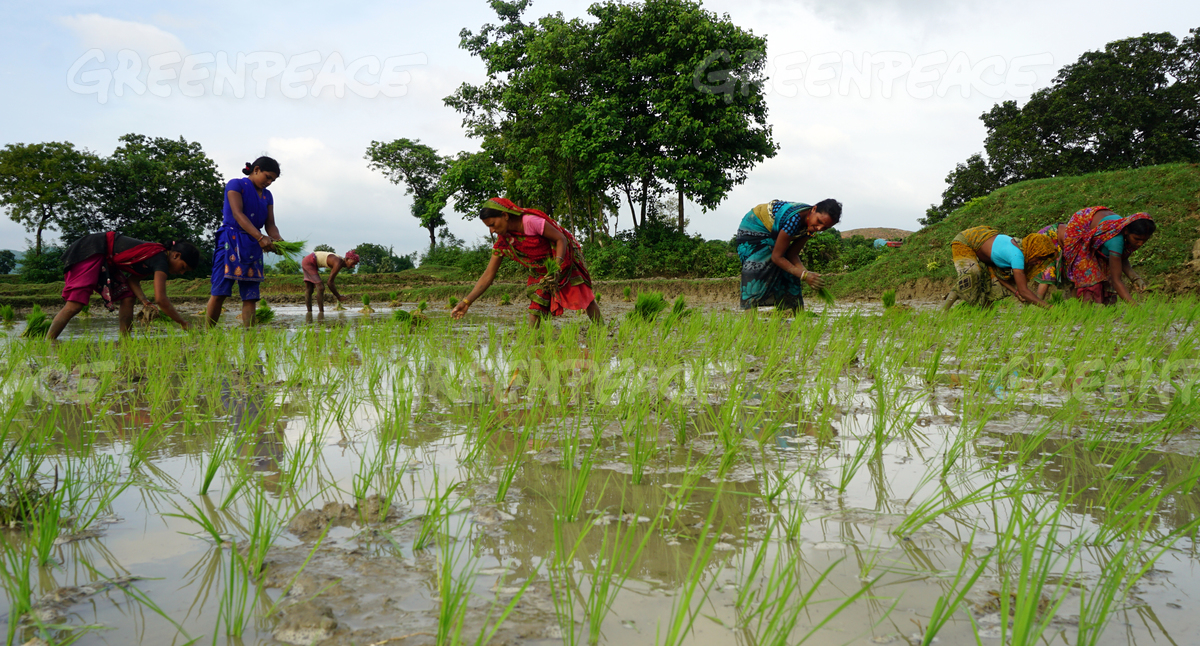New Delhi 6th July 2018| While China has taken an important step forward in the battle against air pollution by releasing its second (a follow-up of the first plan in 2013) clean air action plan to fight air pollution, India’s clean air action programme is yet to see the light of the day.
Emission Targets
The NCAP draft released by MoEFCC on April 17th missed on setting time bound targets and also ignored on incorporating emission targets from the most polluting sectors such as thermal power plants and industries. Emissions from thermal power plants are a major contributor to surging primary and secondary particulate matter levels in India, especially coal power sector being the key contributor to air pollution. In December 2015, MoEF&CC has set the deadline of December 7th 2017 to implement new emission standard and water norms by all thermal power plants had lapsed leading to more than 300 coal based power plants units violating the emission standard norm.
Greenpeace India along with other civil society organisations have sent recommendations to MoEF&CC on NCAP.
“The draft NCAP concept note lacks specificity and timelines, it has missed out on emission and sectoral targets, making it feeble, we hope that MoEFCC incorporates all the recommendations and make NCAP truly a comprehensive plan to tackle air pollution in a time bound manner.” said Sunil Dahiya, Senior Campaigner, Greenpeace India.
Dahiya said “while China still has a long way to go to solve its air pollution problem, the progress of the past few years shows what works: region-wide, time-bound targets that hold decision-makers accountable, strong emission standards and strong enforcement, as well as a shift away from polluting energy sources. Indian Government should learn from these actions to curb air pollution levels internationally and must expedite enforcement of the National Clean Air Programme without further delay.”
China’s first action plan leads to record-setting fall in PM2.5
China’s first five-year air pollution action plan, implemented in 2013, saw an impressive 33% fall in PM2.5 in 74 key cities. Stricter emissions standards and a shift away from permitting new coal-fired power plants had a major impact. However, nationwide air quality improvements in China slowed in 2017, due to a smokestack industry rebound.
China’s new three-year action plan designates new areas of focus and increases emphasis on structural transition, including restructuring of coal and smokestack industries and transport– the major causes of air pollution in China. The new action plan heightens pressure on cities outside the scope of the 2013 action plan and those that performed poorly during the previous five-year period. However, the target of an 18% fall in PM2.5 between 2015 and 2020 will have little to no impact on cities that saw major air quality improvements between 2015 and 2017 — additional targets specific to these areas are needed to further increase ambition.
“In India, China and around the world, we must continue to push for effective air pollution solutions, including time-bound targets, strong emissions standards and a shift away from polluting sources. Air pollution is a growing global health crisis, and there is an urgent need for solutions that will lead to blue skies.”concludes Dahiya.
For details-
Madhulika Verma, Senior Media Specialist, Greenpeace India, +9971137736, [email protected]
Sunil Dahiya, Senior Campaigner, Greenpeace India, +9013673250, [email protected]



